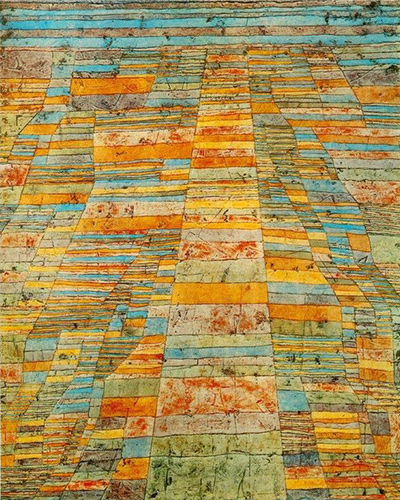Highway and Byways tiles together an elaborate sense of perspective
Highways and byways painting was one of the most important paintings by Paul Klee to come to life. At sixteen, Klee had developed landscape drawings and showed great skill.
He made travels through Egypt in 1929 where he developed a better sense of landscape painting. He is described by several historians to have discovered a sense of measure and proportion where human beings developed a relationship with depth of landscape.
For this image, he uses strata as building blocks. The image portrays an aerial view of an extended landscape. The extensiveness of the image appears oblique creates an illusion of relief and perspective.
The image is complex in itself as it creates consecutive doublings of byways and highways. Smaller areas of the dense landscape is the lost by reducing the amount.
Far ahead in the painting, there is a highway which appears to approach water. This can be translated to be probably the Nile. Klee’s painting came after his trip to Egypt. Quite interestingly, he developed his imaginative landscape painting as an interpretation of the cultivated plots. The style here is clearly influenced by primitive art, which is also known to have had an impact on the careers of Georgia O'Keeffe, Ansel Adams and Jackson Pollock (native American Indians).
As mentioned, the painting came from a trip to Egypt, from December 1929 to January 1930. He visited Egypt and went through Karnak, Luxor, Cairo, Aswan and Thebes. His journey as a great experience as he creatively grew his landscape craft.
His works before his trip show similarities to this work. He certainly had an idea of his works before his journey to Egypt.
Klee had made a study of Egypt and its culture. He felt a historical sensibility with a simultaneous view of space and time critical in Egyptian pictures. The works was painted six months after traveling to Egypt. These pictorial ideas were later left to mature with a poetic meaning added.




